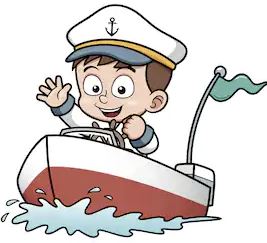The 4 hallmarks of a great skipper
The 4 hallmarks of a great skipper
Is it the ability to pull off impressive feats of seamanship and come alongside with aplomb that makes the best skippers? Or does it have more to do with navigating the rocky coastline of interpersonal relationships within the narrow confines of a small yacht at the mercy of the weather’s vicissitudes?
Many of us sail with friends and family, rather than a disciplined race crew, and how much we enjoy our time spent on board and the degree of harmony between the crew is often a greater mark of success than miles logged or hardships overcome.
We talked to three of the world’s best skippers – Pete Goss, Dee Caffari and Conrad Humphreys – about how to skipper a boat in such a way that crews remain motivated and willing to join the next cruise.
Allow mistakes to happen
-Pete Goss
‘In order for people to improve you do need to give them a level of responsibility,’ says Pete Goss, who has raced in the Vendée Globe, sailed to Australia in an open lugger and is now cruising around the world with his wife Tracey.
‘A big part of that is allowing them to do things wrong. If you see someone making a mistake, your role as skipper is to judge the potential consequences of that mistake, and if you know they are likely to be fairly minimal, sit back and allow it to happen. Then you can gently coach them afterwards.
‘Shouting at someone, even through urgency not anger, when they don’t know what they are doing wrong or perhaps have not even had a chance to do something wrong, drastically reduces their confidence and only has the effect of making them less likely to give things a try in the long run.’
Manage tiredness levels
-Dee Caffari
‘In my experience, it is always eating and sleeping that are two key points that result in tension,’ says Dee Caffari, who skippered Turn the Tide on Plastic in the most recent Volvo Ocean Race.
‘I’m sure we have all been in that ‘hangry’ state where we are sleepy and hungry and it is just the worst thing ever. A key problem here, is that sometimes people want to be seen to be enthusiastic and super-keen, so they’ll try to work through their off watch. But that does not help anyone. It’s really important to try and instill in your crew that they are of no value once they are too tired.
‘Any boat I am in charge of, I always operate with the rule that if you’re sleeping, then your job is to sleep and it is the job of those on watch to wake you up when it is time for you to go on watch. That way you should be able to sleep properly without having that feeling of waiting for an alarm in the back of your mind and waking every few minutes to check your watch – it also helps with building trust throughout the crew.’
Give proper briefings
-Pete Goss
‘It’s important to remember, it is really easy for people to go through life without having to experience a situation where teamwork is an absolute necessity,’ says Goss.
‘Many people have a job where if someone drops the ball, the consequences are not that big or it can be sorted elsewhere, but on a boat you do not have that luxury. So it’s essential to instill a teamwork mentality from the off.
‘On an initial briefing, when people join the boat, the first thing I ask is if everyone can swim and then I’ll say, ‘Look these are the lifejackets here, let me show you how they work, we wear them in these circumstances without negotiation but you can wear them all the time if you wish etc.
‘Another tip is to use positive language. Rather than saying what you don’t want to happen, you need to be able to say what you do want to happen, to articulate what you want to achieve. It’s easy to be in a negative language mode, but it’s hard to turn that around. A good management tool is to be positive, prioritise, and focus on things you can action.’
Know your crew
-Dee Caffari
‘It is always a risk when you do not know someone you are sailing with,’ says Caffari. ‘You can make it as much of a calculated risk as possible, though.
‘Often if you are sailing with someone for a specific purpose, say a Transatlantic, then you usually do not have the luxury of sailing with them for 48 hours beforehand – which I consider a good stretch of time to really get to know how someone is at sea. By the very nature of them putting themselves out there as crew, you usually have an idea of the sort of person they are. They’ll usually have some sailing knowledge in order to be available for a trip or to have put themselves up for it, for example.
‘What you really want is someone who is easy going and relaxed and who can blend in with the people you already have in your crew; ideally they will just seamlessly blend in with those around them.’
Caffari thinks a lot can be learned merely from sitting down together as a whole crew and seeing how everyone interacts, whether it feels like a relaxed environment or if there are any differences in aims. ‘It’s always worth going through any rules you have onboard too. With safety elements, such as lifejackets and when you wear them, if you see eye-to-eye on that subject, then it’s probably a good sign. Obviously if they disagree with some of those safety rules you are going to be set up for conflict from the off.’
The 4 hallmarks of a great skipper
Read the full article here

